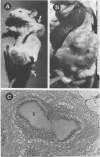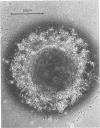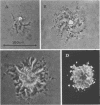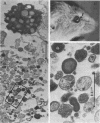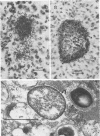Abstract
Single-cell suspensions of Nocardia caviae 112 were injected into normal, athymic, and asplenic mice by several different routes. The 50% lethal dose values, kill curve characteristics, histological and electron microscopic properties, organ clearance patterns, and induction of L-forms during the acute and chronic phase of disease were determined in groups of mice for up to 2 years after infection. From these data we concluded the following. (i) Athymic and asplenic animals were significantly more susceptible to N. caviae than their littermate controls regardless of inoculation route. (ii) All mice were most susceptible to lethal infection after intranasal administration and least affected when the organisms were injected into the peritoneal cavity. (iii) Chronic, progressive disease leading to the formation of mycetomas occurred only in mice injected intravenously. (iv) T-cell-deficient animals were impaired in the development of typical mycetomas. (v) L-forms of N. caviae were induced within immunocompetent hosts, whereas the cell wall-less state of the bacteria was not observed in the immunodeficient animals. (vi) Two colony types of the cell wall-deficient state were isolated from infected animals. (vii) These cell wall-deficient organisms were intimately involved in the pathogenesis of disease and bacterial persistence within the host. Finally (viii), with this strain of Nocardia, cell wall-deficient organisms played a major role in the development of the characteristic bacterial granule formed within the mycetomatous lesions 6 months to 1 year after intravenous inoculation.
Full text
PDF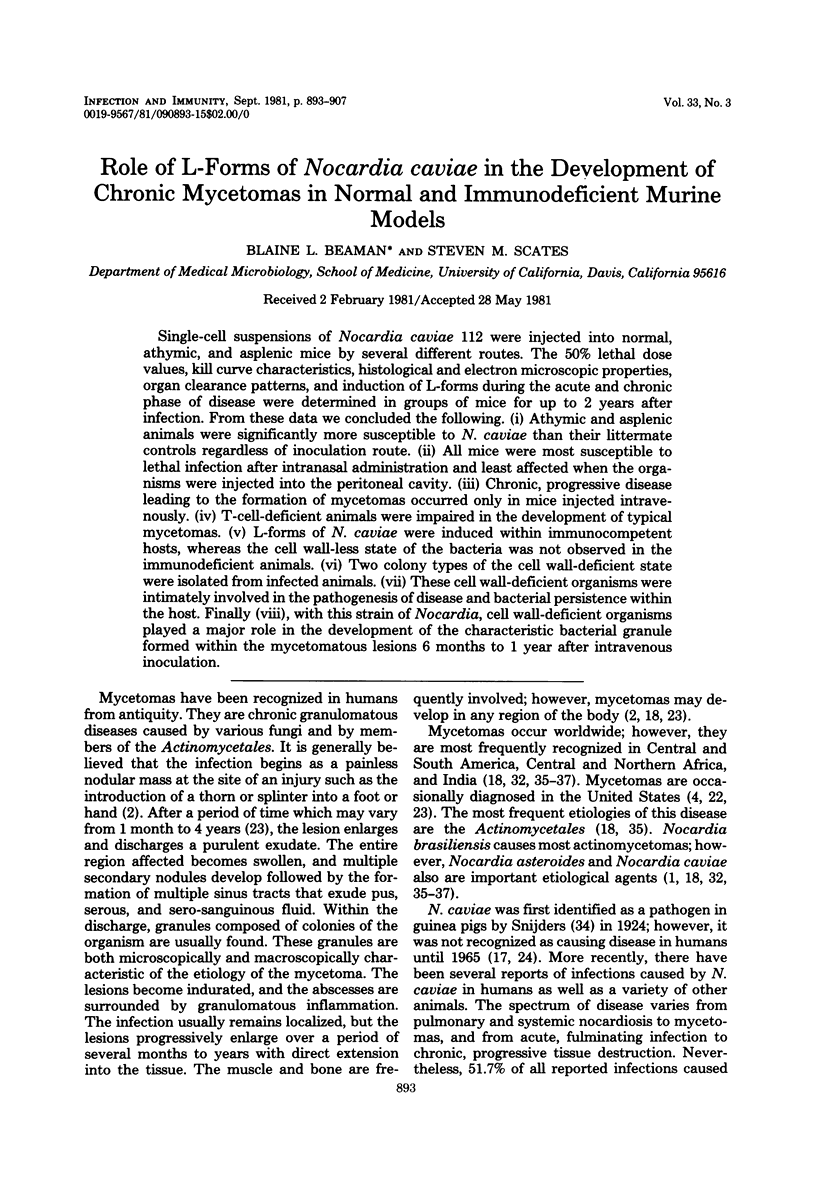

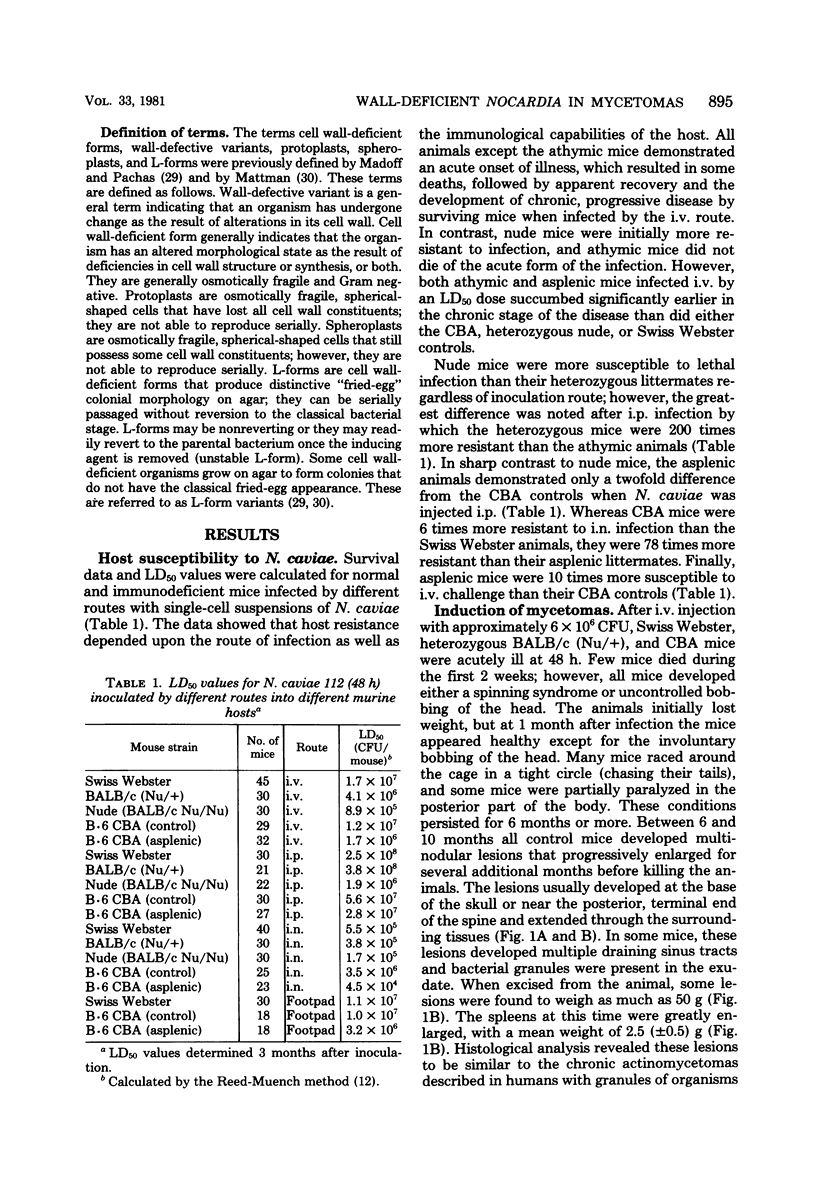
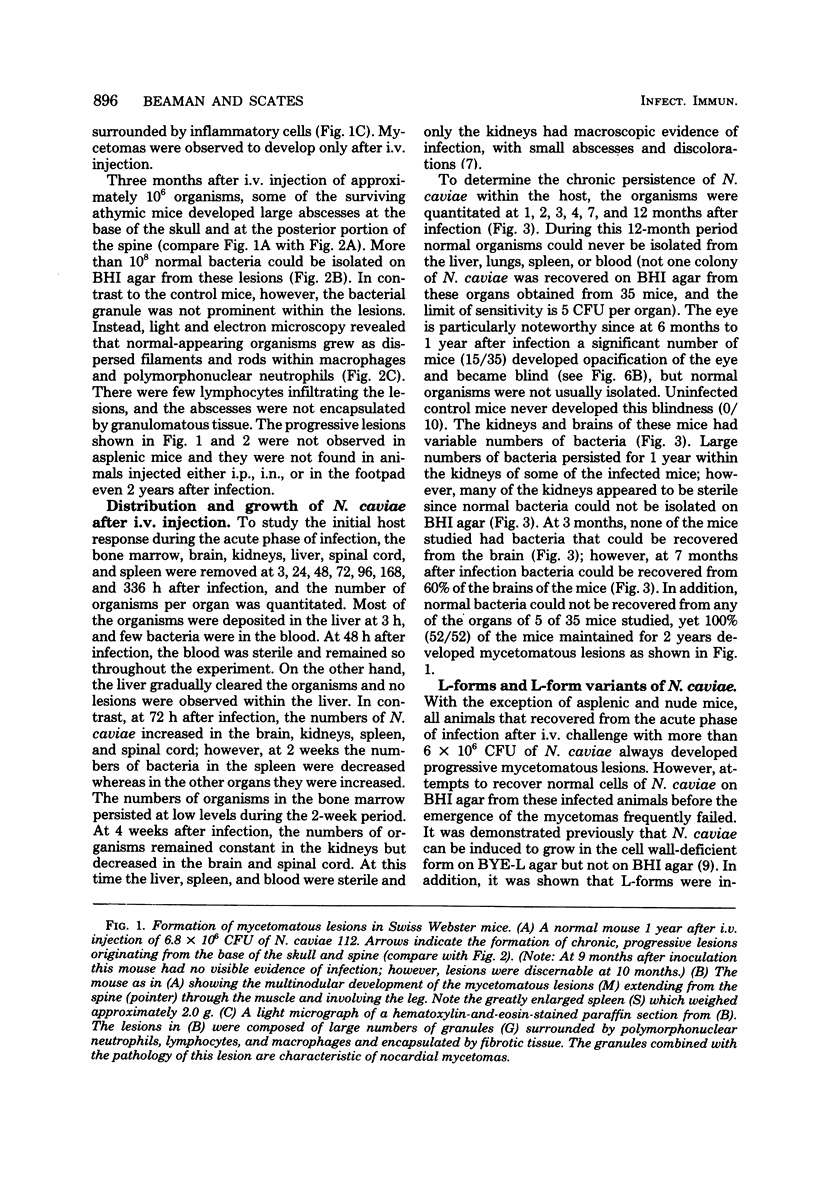
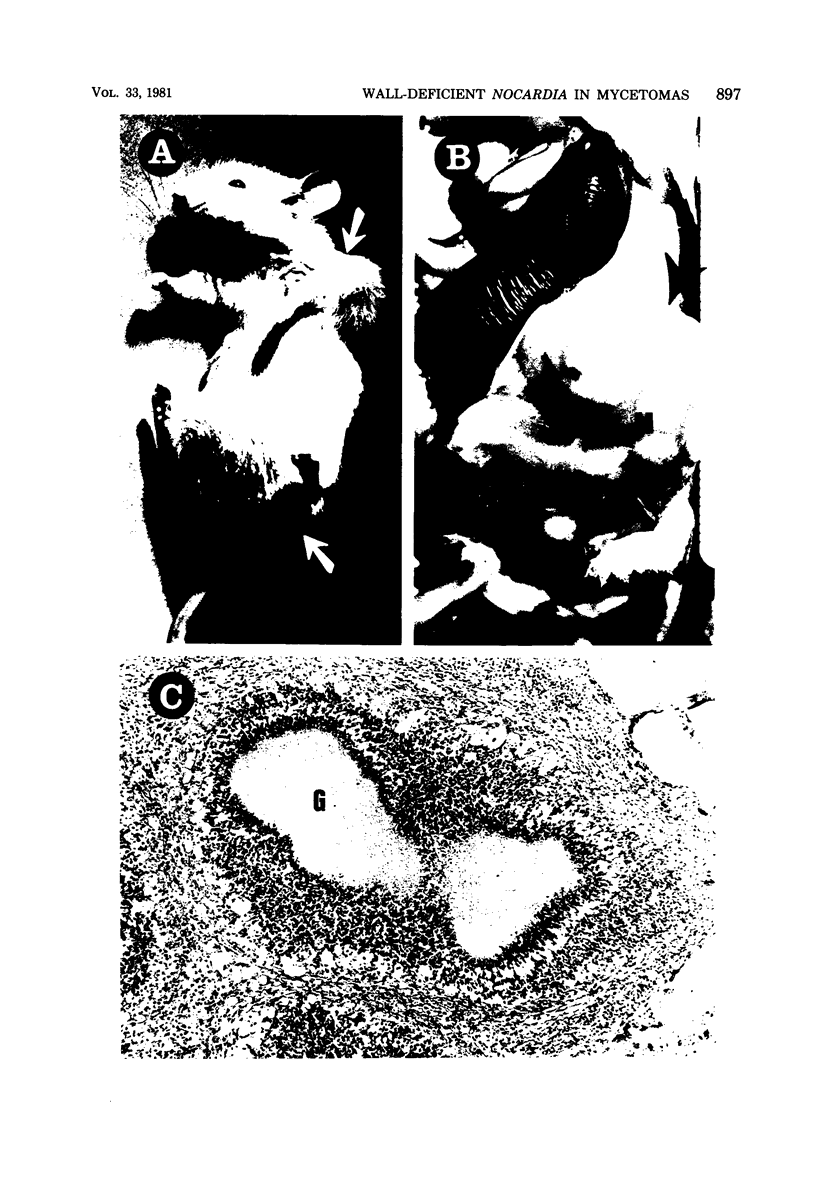
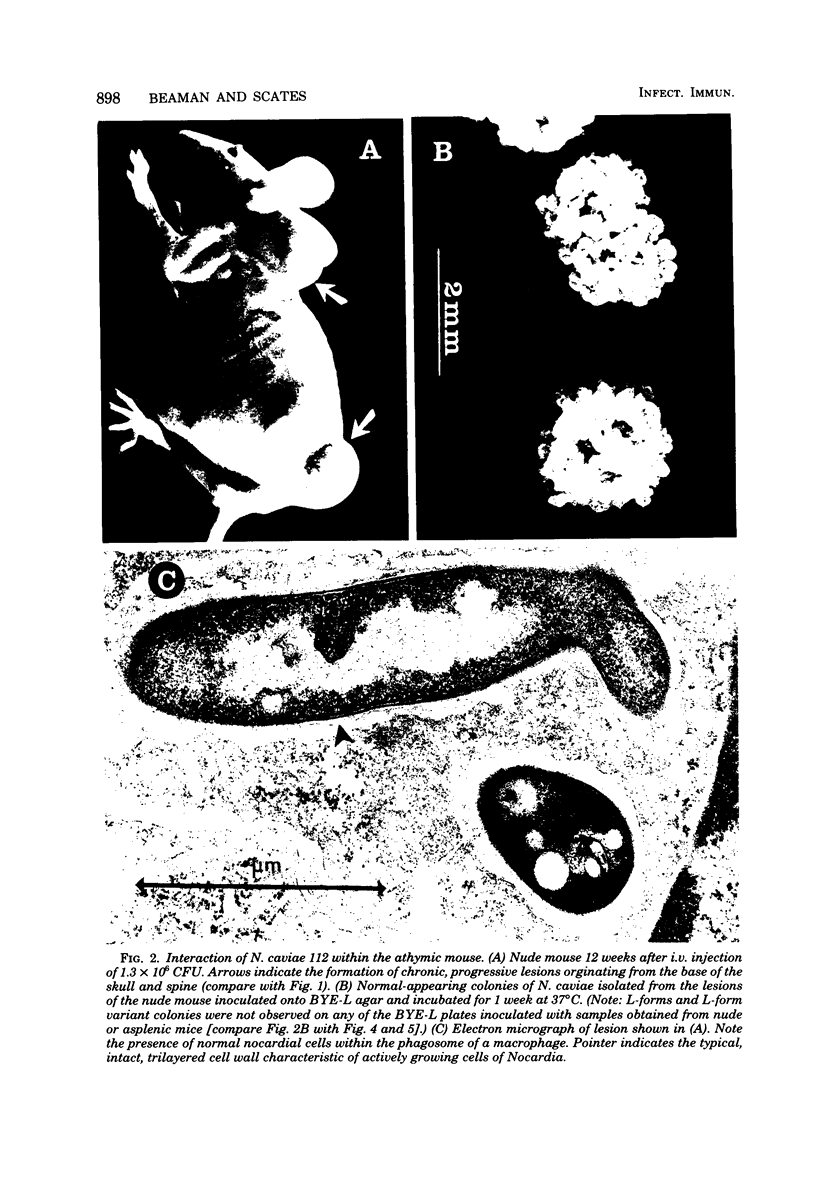
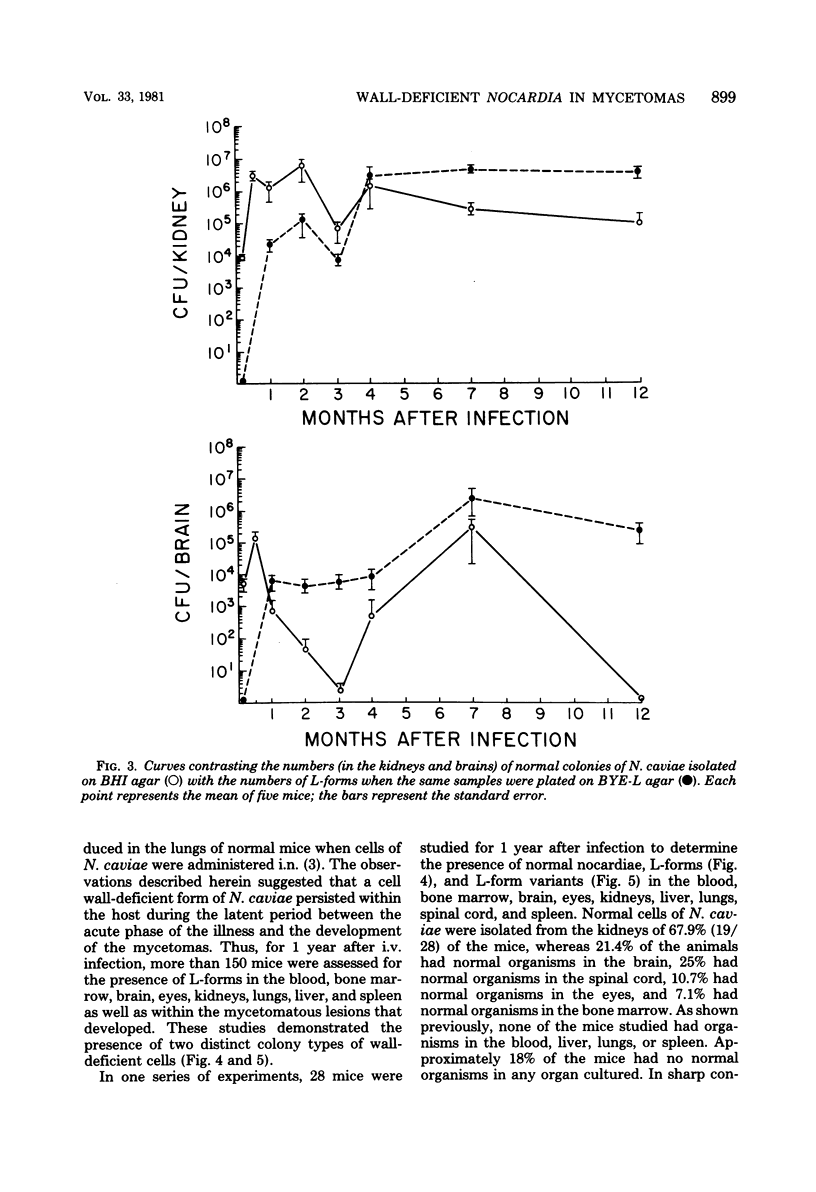
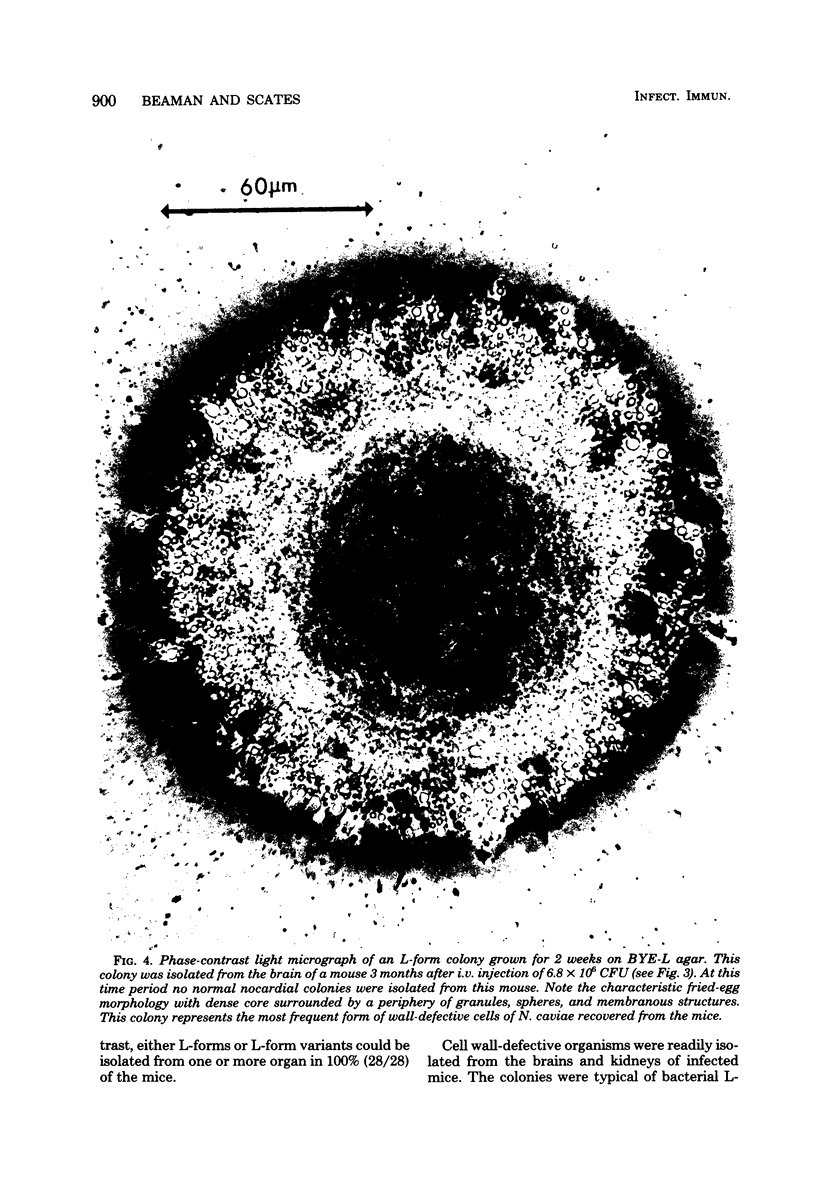
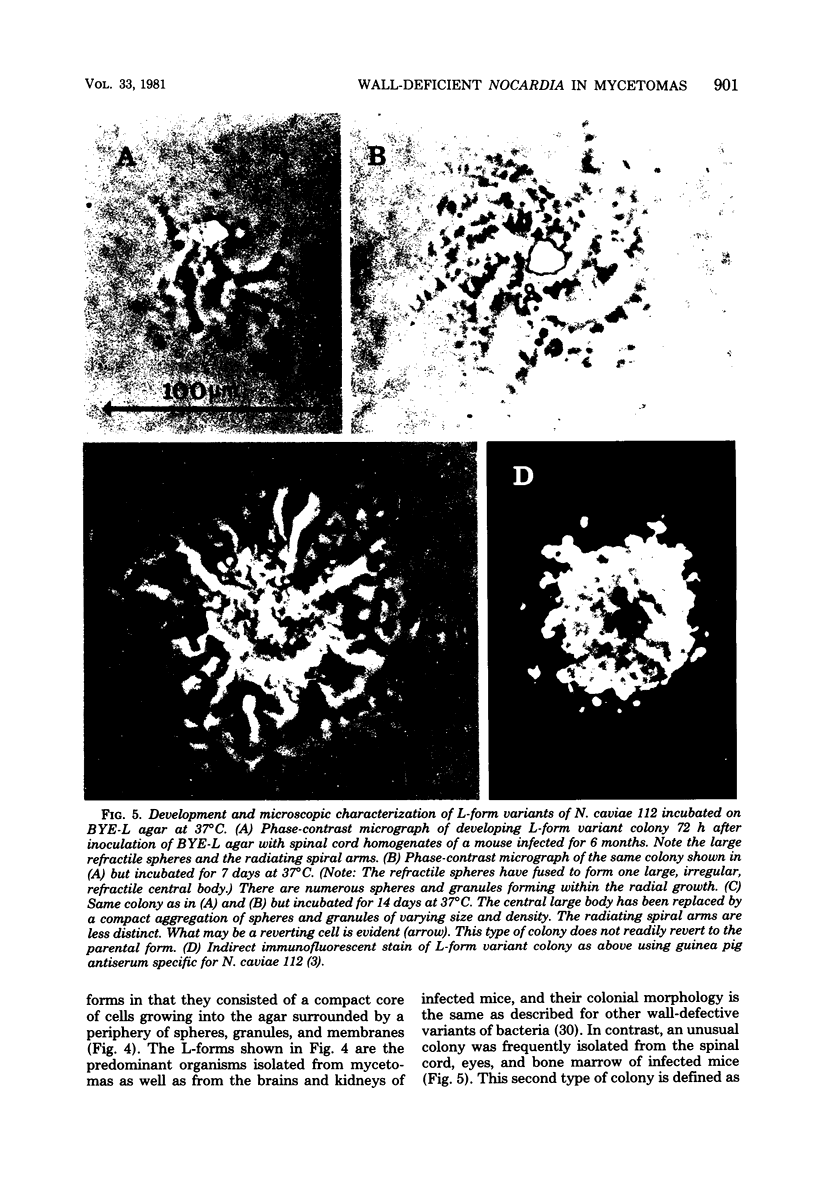
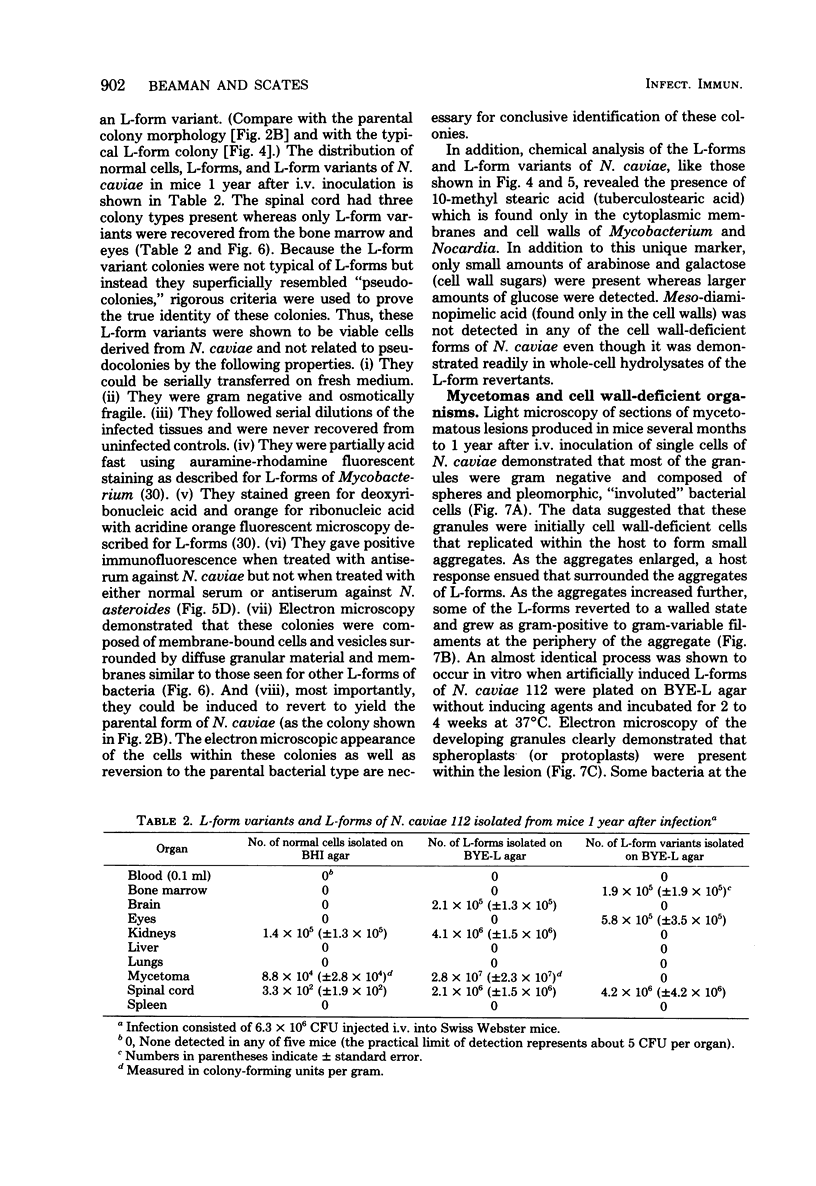

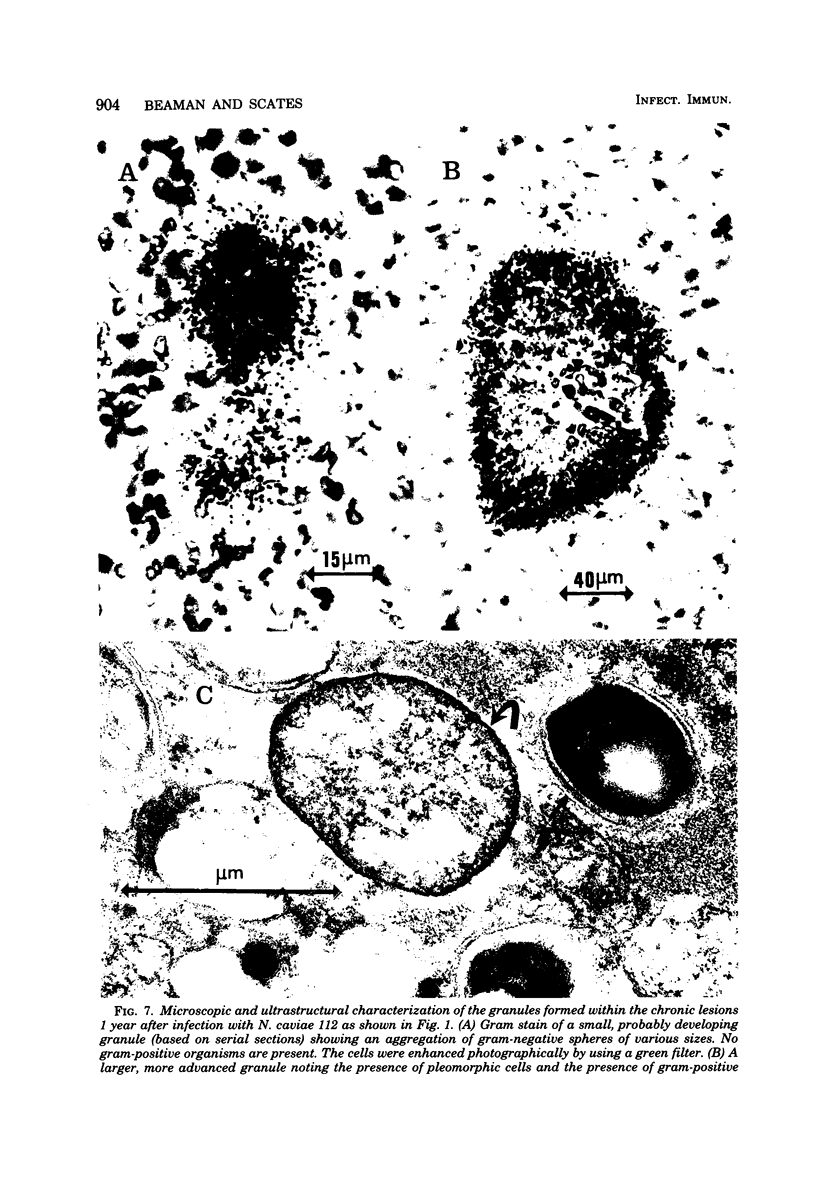
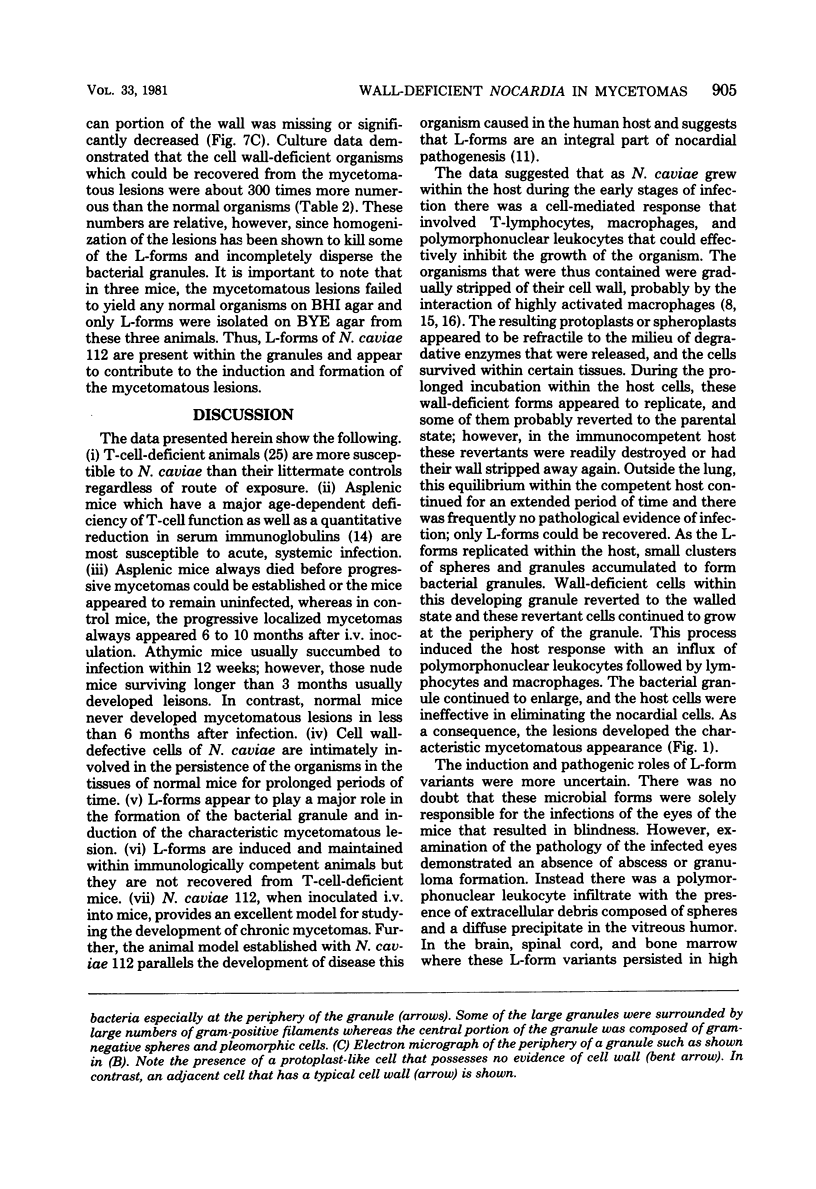
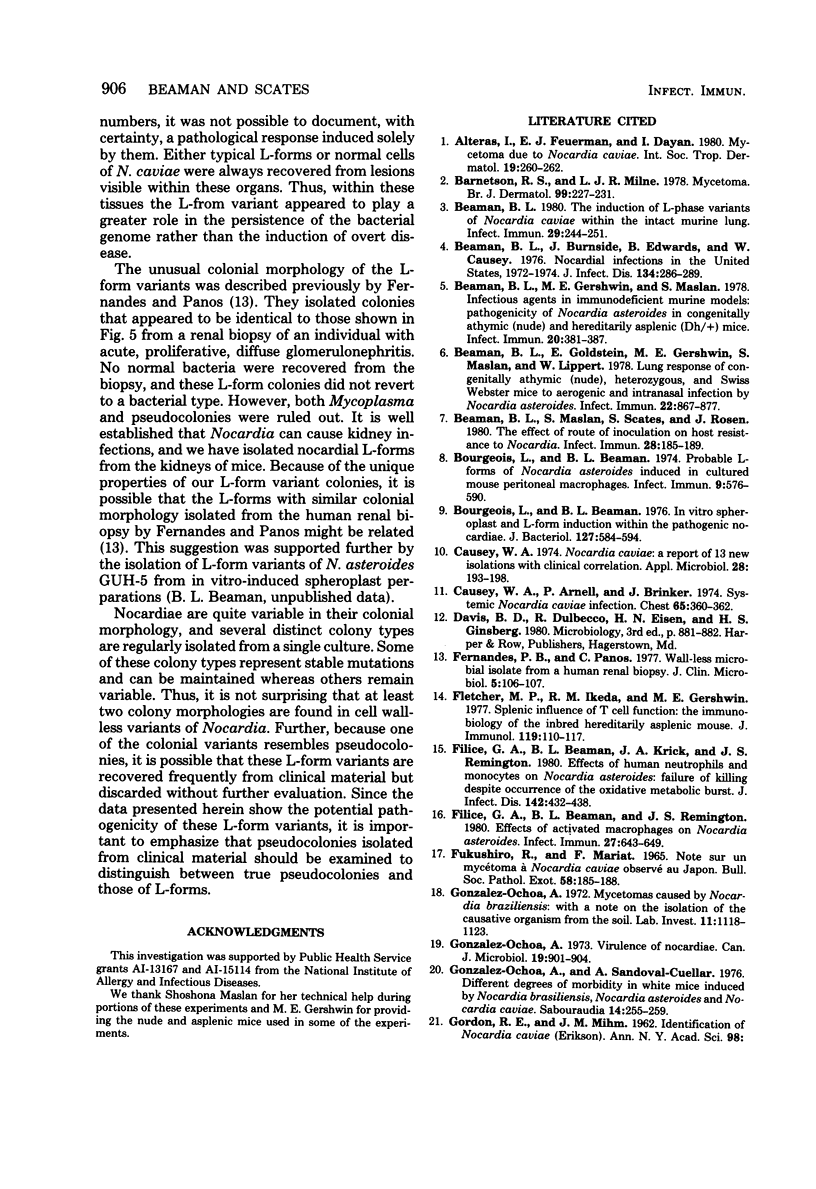
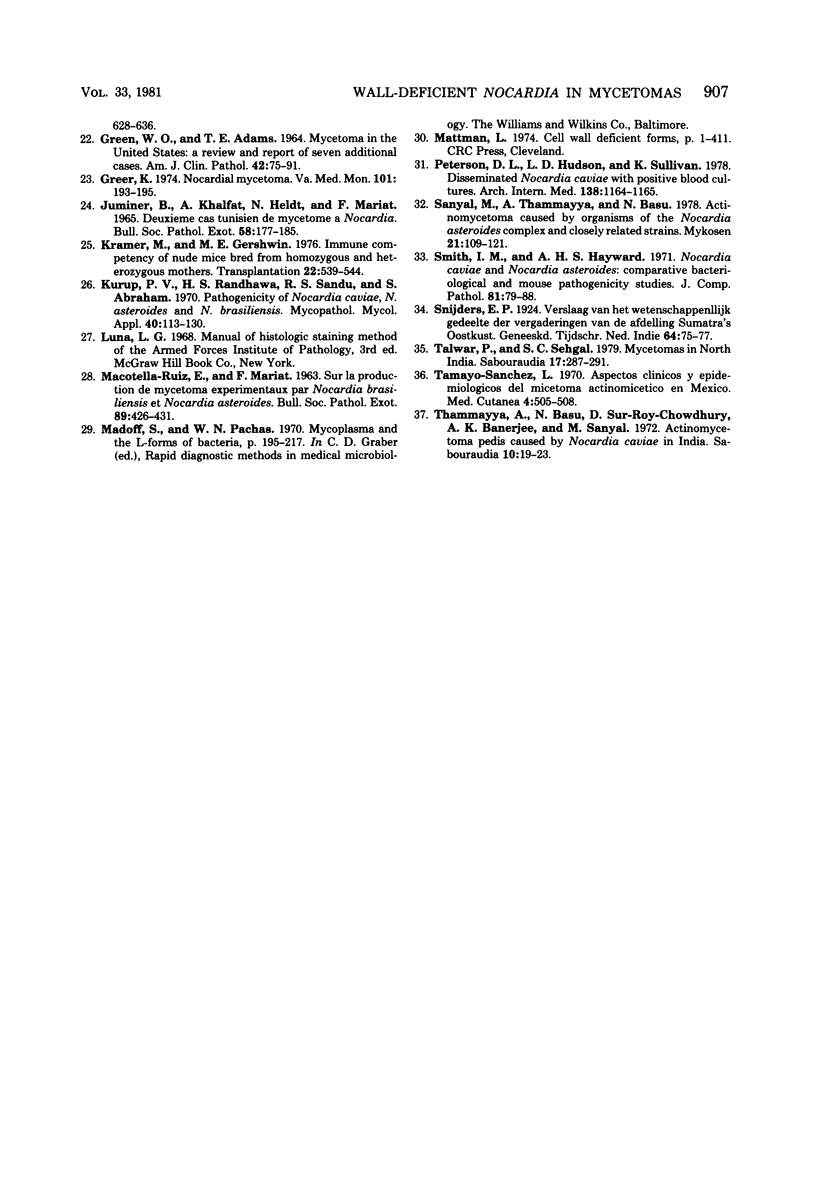
Images in this article
Selected References
These references are in PubMed. This may not be the complete list of references from this article.
- Alteras I., Feuerman E. J., Dayan I. Mycetoma due to Nocardia caviae. The first Israeli patient. Int J Dermatol. 1980 Jun;19(5):260–262. doi: 10.1111/j.1365-4362.1980.tb00325.x. [DOI] [PubMed] [Google Scholar]
- Barnetson R. S., Milne L. J. Mycetoma. Br J Dermatol. 1978 Aug;99(2):227–231. doi: 10.1111/j.1365-2133.1978.tb01990.x. [DOI] [PubMed] [Google Scholar]
- Beaman B. L., Burnside J., Edwards B., Causey W. Nocardial infections in the United States, 1972-1974. J Infect Dis. 1976 Sep;134(3):286–289. doi: 10.1093/infdis/134.3.286. [DOI] [PubMed] [Google Scholar]
- Beaman B. L., Gershwin M. E., Maslan S. Infectious agents in immunodeficient murine models: pathogenicity of Nocardia asteroides in congenitally athymic (nude) and hereditarily asplenic (Dh/+) mice. Infect Immun. 1978 May;20(2):381–387. doi: 10.1128/iai.20.2.381-387.1978. [DOI] [PMC free article] [PubMed] [Google Scholar]
- Beaman B. L., Goldstein E., Gershwin M. E., Maslan S., Lippert W. Lung response to congenitally athymic (nude), heterozygous, and Swiss Webster mice to aerogenic and intranasal infection by Nocardia asteroides. Infect Immun. 1978 Dec;22(3):867–877. doi: 10.1128/iai.22.3.867-877.1978. [DOI] [PMC free article] [PubMed] [Google Scholar]
- Beaman B. L. Induction of L-phase variants of Nocardia caviae within intact murine lungs. Infect Immun. 1980 Jul;29(1):244–251. doi: 10.1128/iai.29.1.244-251.1980. [DOI] [PMC free article] [PubMed] [Google Scholar]
- Beaman B. L., Maslan S., Scates S., Rosen J. Effect of route on inoculation on host resistance to Nocardia. Infect Immun. 1980 Apr;28(1):185–189. doi: 10.1128/iai.28.1.185-189.1980. [DOI] [PMC free article] [PubMed] [Google Scholar]
- Bourgeois L., Beaman B. L. In vitro spheroplast and L-form induction within the pathogenic nocardiae. J Bacteriol. 1976 Jul;127(1):584–594. doi: 10.1128/jb.127.1.584-594.1976. [DOI] [PMC free article] [PubMed] [Google Scholar]
- Bourgeois L., Beaman B. L. Probable L-forms of Nocardia asteroides induced in cultured mouse peritoneal macrophages. Infect Immun. 1974 Mar;9(3):576–590. doi: 10.1128/iai.9.3.576-590.1974. [DOI] [PMC free article] [PubMed] [Google Scholar]
- Causey W. A., Arnell P., Brinker J. Systemic Nocardia caviae infection. Chest. 1974 Mar;65(3):360–362. doi: 10.1378/chest.65.3.360. [DOI] [PubMed] [Google Scholar]
- Causey W. A. Nocardia caviae: a report of 13 new isolations with clinical correlation. Appl Microbiol. 1974 Aug;28(2):193–198. doi: 10.1128/am.28.2.193-198.1974. [DOI] [PMC free article] [PubMed] [Google Scholar]
- Fernandes P. B., Panos C. Wall-less microbial isolate from a human renal biopsy. J Clin Microbiol. 1977 Jan;5(1):106–107. doi: 10.1128/jcm.5.1.106-107.1977. [DOI] [PMC free article] [PubMed] [Google Scholar]
- Filice G. A., Beaman B. L., Krick J. A., Remington J. S. Effects of human neutrophils and monocytes on Nocardia asteroides: failure of killing despite occurrence of the oxidative metabolic burst. J Infect Dis. 1980 Sep;142(3):432–438. doi: 10.1093/infdis/142.3.432. [DOI] [PubMed] [Google Scholar]
- Filice G. A., Beaman B. L., Remington J. S. Effects of activated macrophages on Nacardia asteroides. Infect Immun. 1980 Feb;27(2):643–649. doi: 10.1128/iai.27.2.643-649.1980. [DOI] [PMC free article] [PubMed] [Google Scholar]
- Fletcher M. P., Ikeda R. M., Gershwin M. E. Splenic influence of T cell function: the immunobiology of the inbred hereditarily asplenic mouse. J Immunol. 1977 Jul;119(1):110–117. [PubMed] [Google Scholar]
- Fukushiro R., Mariat F. Note sur un mycétome à Nocardia caviae observé au Japon. Bull Soc Pathol Exot Filiales. 1965 Mar-Apr;58(2):185–188. [PubMed] [Google Scholar]
- GREEN W. O., Jr, ADAMS T. E. MYCETOMA IN THE UNITED STATES; A REVIEW AND REPORT OF SEVEN ADDITIONAL CASES. Am J Clin Pathol. 1964 Jul;42:75–91. doi: 10.1093/ajcp/42.1.75. [DOI] [PubMed] [Google Scholar]
- Gonzalez Ochoa A. Virulence of nocardiae. Can J Microbiol. 1973 Aug;19(8):901–904. doi: 10.1139/m73-144. [DOI] [PubMed] [Google Scholar]
- González-Ochoa A., Sandoval-Cuellar A. Different degrees of morbidity, in the white mouse, induced by Nocardia brasiliensis, Nocardia asteroides and Nocardia caviae. Sabouraudia. 1976 Nov;14(3):255–259. doi: 10.1080/00362177685190381. [DOI] [PubMed] [Google Scholar]
- Greer K. E. Nocardial mycetoma. Va Med Mon (1918) 1974 Mar;101(3):193–195. [PubMed] [Google Scholar]
- Juminer B., Khalfat A., Heldt N., Mariat F. Deuxième cas tunisien de mycétome à Nocardia. Bull Soc Pathol Exot Filiales. 1965 Mar-Apr;58(2):177–185. [PubMed] [Google Scholar]
- Kramer M. H., Gershwin M. E. Immune competency of nude mice bred from homozygous and heterozygous mothers. Transplantation. 1976 Dec;22(6):539–544. doi: 10.1097/00007890-197612000-00001. [DOI] [PubMed] [Google Scholar]
- Kurup P. V., Randhawa H. S., Sandhu R. S., Abraham S. Pathogenicity of Nocardia caviae, N. asteroies and N. brasiliensis. Mycopathol Mycol Appl. 1970;40(2):113–130. doi: 10.1007/BF02051989. [DOI] [PubMed] [Google Scholar]
- OCHOA A. G. Mycetomas caused by Nocardia brasiliensis; with a note on the isolation of the causative organism from soil. Lab Invest. 1962 Nov;11:1118–1123. [PubMed] [Google Scholar]
- Petersen D. L., Hudson L. D., Sullivan K. Disseminated Nocardia caviae with positive blood cultures. Arch Intern Med. 1978 Jul;138(7):1164–1165. [PubMed] [Google Scholar]
- Sanyal M., Thammayya A., Basu N. Actinomycetoma caused by organisms of the Nocardia asteroides complex and closely related strains. Mykosen. 1978 Apr;21(4):109–121. doi: 10.1111/j.1439-0507.1978.tb01624.x. [DOI] [PubMed] [Google Scholar]
- Smith I. M., Hayward A. H. Nocardia caviae and Nocardia asteroides: comparative bacteriological and mouse pathogenicity studies. J Comp Pathol. 1971 Jan;81(1):79–87. doi: 10.1016/0021-9975(71)90058-2. [DOI] [PubMed] [Google Scholar]
- Talwar P., Sehgal S. C. Mycetomas in North India. Sabouraudia. 1979 Sep;17(3):287–291. doi: 10.1080/00362177985380421. [DOI] [PubMed] [Google Scholar]
- Thammayya A., Basu N., Sur-Roy-Chowdhury D., Banerjee A. K., Sanyal M. Actinomycetoma pedis caused by Nocardia caviae in India. Sabouraudia. 1972 Mar;10(1):19–23. [PubMed] [Google Scholar]



